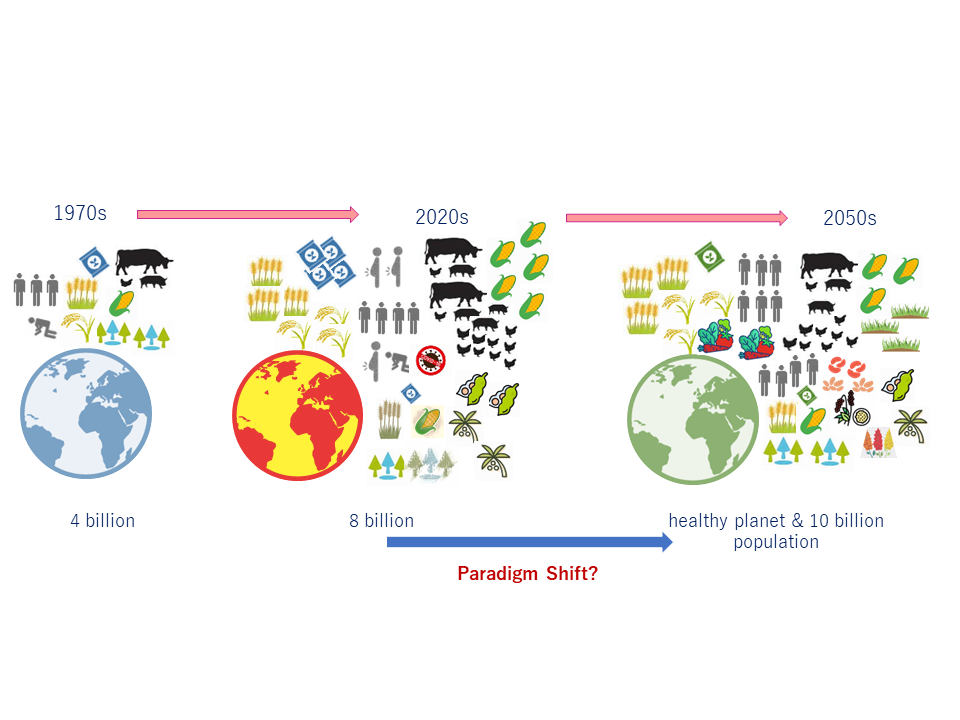Pick Up
817. World Population Day 2023

817. World Population Day 2023
July 11 is World Population Day. Understanding the possible patterns of future population levels and the demographics of individual countries and regions is critical to maintaining food and nutrition security, as well as addressing international development issues and climate change solutions. The United Nations estimates that the world's population will reach 8 billion by 2022, while India is expected to overtake China as the world's most populous country by early 2023, a position it has long held. In the Pick Up section of the JIRCAS website, articles related to world population have received a high number of hits, indicating that people are very interested in the topic.
The United Nations website on World Population Day summarizes trends in world population.
It took a long time for the world's population to reach 1 billion in the mid-19th century after the birth of man, but just under 200 years later, in 2011, it is estimated to have increased sevenfold to 7 billion, 7.9 billion in 2021, 8 billion in 2022, 8.5 billion in 2030, 9.7 billion in 2050, and 10 billion in 2100. The population is projected to reach 8.5 billion in 2030, 9.7 billion in 2050, and 10.9 billion in 2100.
This dramatic population growth is the result of major changes in fertility, urbanization, and population mobility, as well as an increased likelihood of survival to childbearing age, and these trends have major implications for future generations.
In recent years in particular, there have been significant changes in fertility and life expectancy: in the 1970s, women had an average of 4.5 children; by 2015, this had fallen to 2.5 children per woman. Meanwhile, global life expectancy is rising, from 64.6 years in the early 1990s to 72.6 years in 2019.
In addition, urbanization and migration are accelerating: in 2007, the number of urban dwellers surpassed the number of rural dwellers for the first time, and by 2050, 66% of the world's population is expected to live in cities.
These major global trends have profound implications for economic development, employment, income distribution, poverty and the state of social security. Major efforts will be needed to ensure universal access to health systems, education, housing, sanitation, water, food and energy. To meet the needs of individuals in a sustainable manner, policy makers must prepare for sustainable development by considering not only the lives of people in different parts of the world, but also the lives of future generations.
The global demographic context is also changing food and food systems. In the 50 years from the 1970s to the 2020s, the world's population will double from 4 billion to 8 billion. During this period, the application of modern agricultural technology will allow grain production to increase faster than population growth, thus eliminating famine. At the same time, the development of animal products and the processed food industry brought new challenges of obesity and overweight. Meanwhile, in the tropics, the inability to apply modern agricultural technologies has resulted in stagnating staple food production and food and nutrition security, while some tropical forests are being converted to oil palm plantations, leading to deforestation and loss of biodiversity. Thus, today's food system faces problems of obesity and malnutrition, while at the same time being a major driver of planetary boundaries in nitrogen and phosphorus cycling, biodiversity loss, land-use change, and climate change. The global population is projected to grow by an additional 2 billion people in the next 30 years to the 2050s, and the status quo cannot guarantee the health of 10 billion people and the planet. A paradigm shift to a production and consumption system focused on food with low environmental impact and high nutritional value is needed and will require innovation and behavior change.
References
- Summary of the 2017 Revision of the World Population Prospects https://www.jircas.go.jp/en/program/program_d/blog/20170626
- 2018 Revision of World Urbanization Prospects https://www.jircas.go.jp/en/program/program_d/blog/20180523
- Summary of World Population Prospects 2019 https://www.jircas.go.jp/en/program/proc/blog/20190618
- 333. July 11 is World Population Day https://www.jircas.go.jp/en/program/proc/blog/20210708_0
- 440. Trends in World Population and Agriculture・Food Systems https://www.jircas.go.jp/en/program/proc/blog/20211215
- 575. World Population Day ー A Look at Population Trends in Countries Around the World https://www.jircas.go.jp/en/program/proc/blog/20220708
- 578. World Population Prospects 2022: Reaching 8 Billion on November 15 https://www.jircas.go.jp/en/program/proc/blog/20220713
- 657. World Population Surpasses 8 Billion! https://www.jircas.go.jp/en/program/proc/blog/20221114
- 699. China's Population Declines in 2022, India Leads the World in 2023 https://www.jircas.go.jp/en/program/proc/blog/20230119
Contributor: IIYAMA Miyuki (Information Program)
